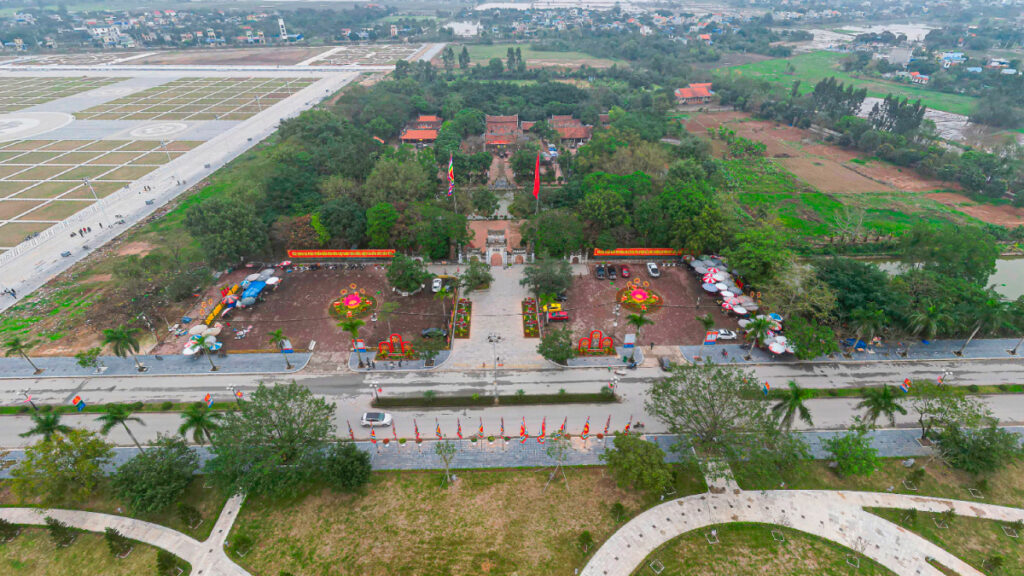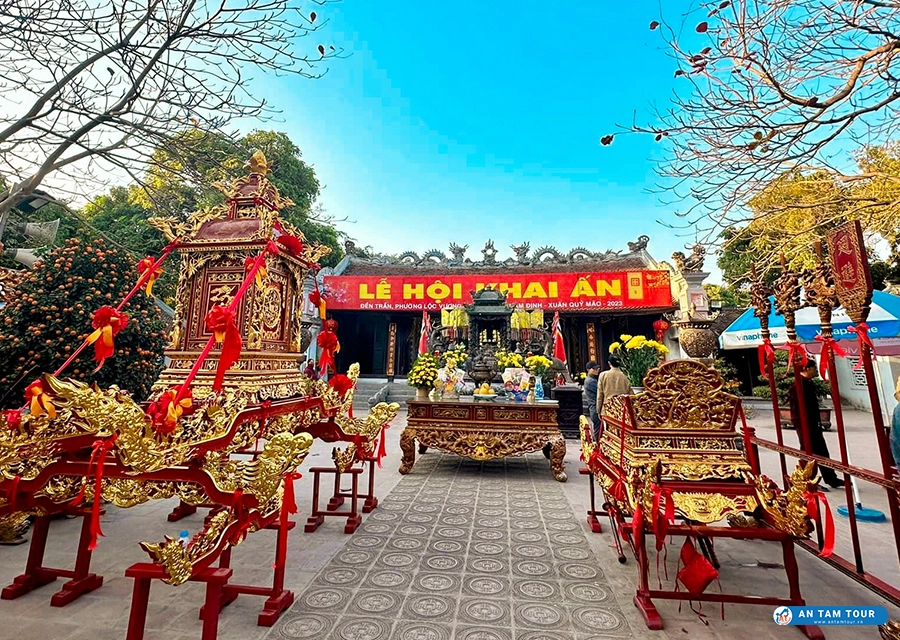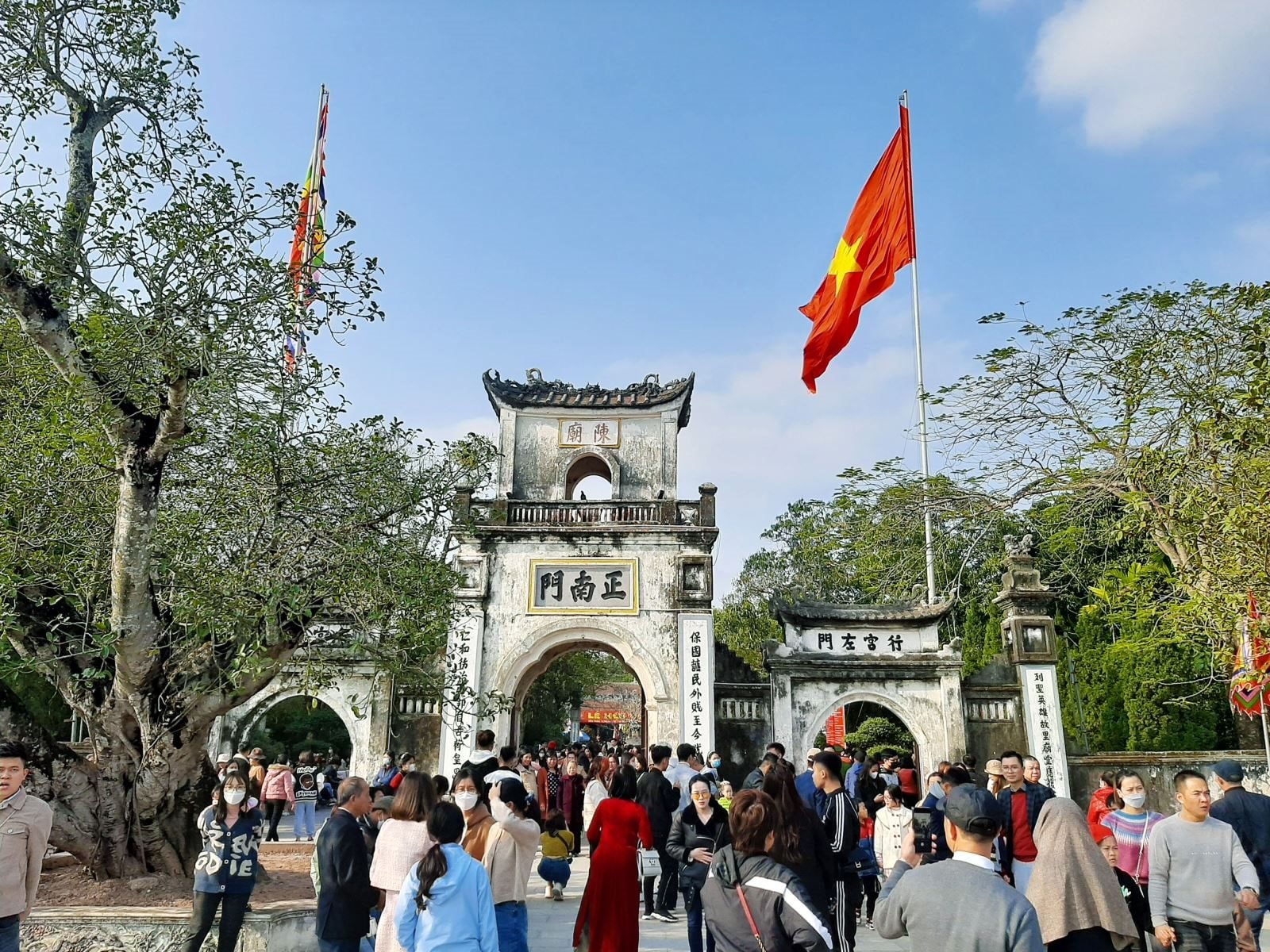Located on Tran Thua Street, Nam Dinh Ward, Ninh Binh Province, Tran Temple is one of Vietnamãs remarkable historical and cultural complexes, preserving the nationãs rich spiritual and cultural values. Built in 1695 on the foundation of the former Thai Temple, Tran Temple is not only a sacred place dedicated to the emperors of the Tran Dynasty but also a historical witness to a flourishing era of Dai Viet.
TRAN TEMPLE NAM DINH ã The ãSecond Capitalã of Dai Viet
Historical Imprint
The predecessor of Tran Temple was Thien Truong Palace, known as the ãsecond capitalã of Dai Viet, second only to Thang Long. In 1258, when the MongolãYuan forces invaded, the Tran army and people withdrew from Thang Long under the ãscorched-earthã strategy and retreated to Thien Truong Palace for refuge. Later, Tran Temple was built to honor the Tran emperors and the meritorious officials who contributed to the dynastyãs prosperity and the defense of the nation.
Architecture and the surrounding space
Tran Temple Historical Complex in Nam Dinh comprises three principal architectural structures: Thien Truong Temple, Co Trach Temple, and Trung Hoa Temple. Each bears its own distinct identity, contributing to a harmonious and solemn ensemble that reflects the grandeur of the Tran Dynasty.
- Thien Truong Temple (Upper Temple):
Situated at the heart of the complex, Thien Truong Temple was built on the foundation of the Tran royal ancestral temple and the Trung Quang Palace. The structure includes the Front Hall, Middle Hall, Main Sanctuary, Incense House, left and right auxiliary halls, East and West corridors, totaling nine buildings with thirty-one compartments. The frame is constructed from ironwood (lim), the roof covered with traditional tiles, and the floor paved with bricks ã all demonstrating the elegance and stability of classical Vietnamese architecture. - Co Trach Temple (Lower Temple):
Located on the eastern side of the complex, Co Trach Temple is dedicated to Grand Commander Hung Dao Dai Vuong Tran Quoc Tuan and his loyal generals. The layout features the Front Hall, Middle Hall, Main Sanctuary, and Incense House, with side chambers honoring civil and military mandarins of the Tran court. - Trung Hoa Temple:
Positioned to the west, Trung Hoa Temple was newly reconstructed in 2000 on the former site of the Trung Hoa Palace. Within the temple stand fourteen bronze statues representing the fourteen emperors of the Tran Dynasty, displayed solemnly in both the Middle Hall and the Main Sanctuary ã symbolizing the enduring legacy of the dynastyãs illustrious rulers.

Photo: Internet

Photo: Internet
Visitor Experience
A visit to Tran Temple offers more than a historical journey ã it is an immersion in serenity and reverence. Visitors can offer incense in commemoration of the Tran kings, stroll through the temple grounds to feel the stillness of ancient space, or sit quietly by the lotus ponds, watching the templeãs reflection ripple on the water. Each step evokes a sense of returning to the tranquil, contemplative rhythm of a bygone era, where time seems to slow and the soul finds peace.
Traditional Festivals
Every year, two major festivals are held at Tran Temple:
- The Seal-Opening Festival (Lã
Khai äËn áãn TräÏn):
Taking place from the 11th to the 16th day of the first lunar month, this is one of the most celebrated spring festivals in the former land of Thien Truong (present-day Nam Dinh) ã the birthplace of the Tran Dynasty. Pilgrims and visitors from across the country come to pay tribute, receive the royal seal, and pray for prosperity and good fortune in the new year. - Tran Temple Festival (Hãi áãn TräÏn):
Held annually from the 19th to the 21st day of the eighth lunar month, this festival honors the Tran emperors and their generals for their great contributions to the nation. The event features a series of solemn rituals and traditional activities such as processions, incense offerings, and ceremonial worship, drawing thousands of participants and fostering a deep sense of national pride and cultural heritage.
Visitor Guidelines for Tran Temple, Nam Dinh
When visiting Tran Temple, it is recommended to dress respectfully and modestly ã avoiding short or revealing clothing ã to honor the sanctity of the site. During your visit, maintain a quiet and reverent demeanor, refrain from speaking loudly, and avoid touching relics or exhibits without permission.
If you come during the crowded festival periods, pay special attention to your personal belongings to prevent loss or theft. Outside of festival days, visitors may also come on the first and fifteenth days of the lunar month to offer incense and pray for peace and blessings for themselves and their families.
Visitor Information
-
Address: Tran Thua Street, Nam Dinh Ward, Ninh Binh Province
-
Opening Hours: 6:30 AM ã 6:00 PM daily
-
Entrance Fee: Free
-
Dress Code: Polite, modest clothing; maintain a quiet atmosphere
-
Best Time to Visit: Early spring and autumn, when the air is fresh and the light is soft
Suggested Itinerary Near Tran Temple
- Thung Nham Ecotourism Zone: 50 km
- Tam Coc ã Bich Dong: 45 km
- Mua Cave: 36 km
- Trang An Scenic Landscape Complex: 40 km
- Bai Dinh Pagoda: 46 km
Amid the pulse of modern life, Tran Temple retains its original serenity and sacred aura. Each visit is not only a journey into the glorious legacy of the Tran Dynasty but also a moment of inner peace and reflection.
To extend your Ninh Binh travel experience, you may continue to Thung Nham Ecotourism Zone, where the fresh air and lush green scenery offer a soothing contrast after moments of solemn worship. A short journey ã yet enough to touch both the depth of history and the natural beauty of Ninh Binhãs land and sky.
Continuing the Tranquility ã From the Sound of Temple Bells to the Green Serenity of Thung Nham




